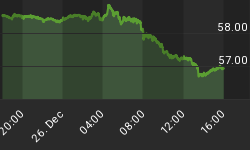In a year full of surprises and challenges, the major averages had a very conformist performance deviating little from established precedents.
For example, in May '16, based on annual price advance and bottom reversal data, we gave an end-of-year price target of 2240 for the SP500.
The major averages followed the 20 year seasonal and 100 year decennial pattern very closely as well:



The more pressing question now is what can we expect from 2017? Looking at the decennial pattern, the picture is mixed: 6 bullish and 6 bearish years. Year 17 in the 20 year cycle, however, tends to be more bearish than the average, and produces steeper declines.

1987 stands out as the DJIA closed barely positive following a 43% drop in October. It should be noted, however, that the index had risen about 250% between 1982 and 1987. Currently, the DJIA is up 100% from the 2012 low, and 200+% from the '09 low.
In terms of longevity, this is the second longest lasting rally of the last 130 years. Therefore, odds favor a 20+% correction any time now.

Going back to the decennial cycle we notice that bullish and bearish years follow a different seasonal path. Bearish years usually follow a down-up-down-up pattern (May 19, July 14, October 27), while bullish years follow an up-flat-up-down-up pattern (January 20, April 7, July 25, October 31).
For now, we'll start with a clean slate based on average projections and a few key angles:

















